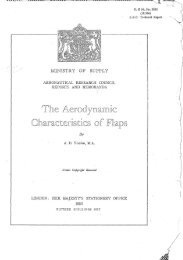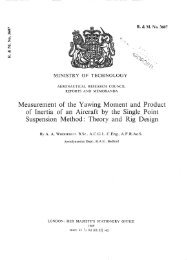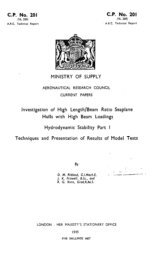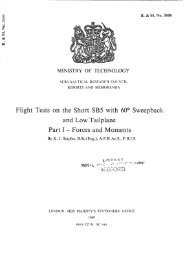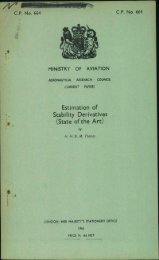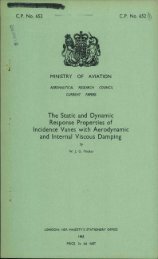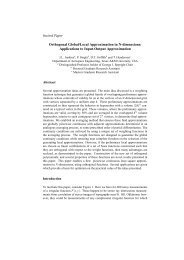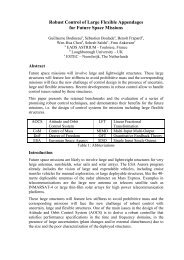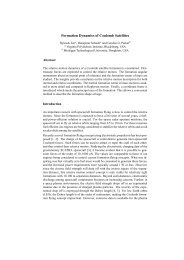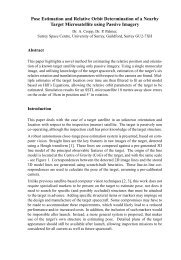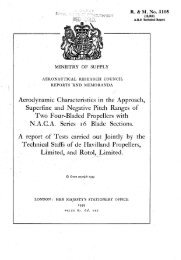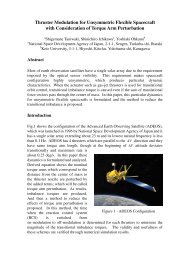A Survey of Unsteady Hypersonic Flow Problems
A Survey of Unsteady Hypersonic Flow Problems
A Survey of Unsteady Hypersonic Flow Problems
Create successful ePaper yourself
Turn your PDF publications into a flip-book with our unique Google optimized e-Paper software.
- 20 -<br />
<strong>of</strong> a disturbance is <strong>of</strong> order sd(= a@). Consequently, the second limitation<br />
can be expressed by<br />
03..<br />
x >> 66<br />
where- X is the wavelength <strong>of</strong> the disturbance.<br />
h/d >> 6 . . . (2.22)<br />
Sychev has shown, in Ref. 25, that a fdrm <strong>of</strong> small disturbance theory<br />
can be developed for bodies at large incidence in hypersonic flow, provided that<br />
the flow on the leeward side <strong>of</strong> the bcdy can be neglected. From this development<br />
<strong>of</strong> the theory it can be shown that on the windward side <strong>of</strong> the body the flow in<br />
a lamina <strong>of</strong> fluid normal to the axis <strong>of</strong> the body can be considered as independent<br />
<strong>of</strong> the flow in adJacent laminae. The form that the equations take will be<br />
illustrated, as before, by considering the general equations <strong>of</strong> motion <strong>of</strong> the<br />
fluid. The equations are presented this time in non-dimensional form as, far<br />
this case, the development can be seen more clearly.<br />
The axes &, '1, C., are taken with origin at the nose <strong>of</strong> the body and<br />
the &-axis in the mean direction <strong>of</strong> the principal body axis and the z-axis in<br />
the plane <strong>of</strong> the &-axis and the flow direction (Fig. 6). The independent<br />
variables are made non-dimensIona by the transformations:<br />
g = -, & 11 T = tu co9 a<br />
;i = --&,<br />
. . . (2.23)<br />
b<br />
where b is the body length, 6 is a ratio representing the maximum surface<br />
slope, a is the angle <strong>of</strong> incidence <strong>of</strong> the body and U is the flow velocity<br />
<strong>of</strong> the free stream.<br />
The dependent variables are made non-dimensional by the transformations:<br />
u cos 01 + u v W<br />
= l+ii, 7 = f w =<br />
u 00s a U sin a U sin a<br />
P P<br />
P = , and p = - . . .<br />
pm ua sFna a<br />
PC0<br />
where u, v, w are the velocity perturbations in the &, i, G directions.<br />
Then the general equations <strong>of</strong> fluid motion become<br />
pm u cos a a;; pm u cos OL as; poou sina a(3 pmU sina a(3<br />
-+ -+ -+<br />
b ax b E b6 a? b& a4<br />
b<br />
(2.24)<br />
poou co.9 a a(3<br />
= - -, . . . (2.25)<br />
b E<br />
u2cos2a<br />
b<br />
I



